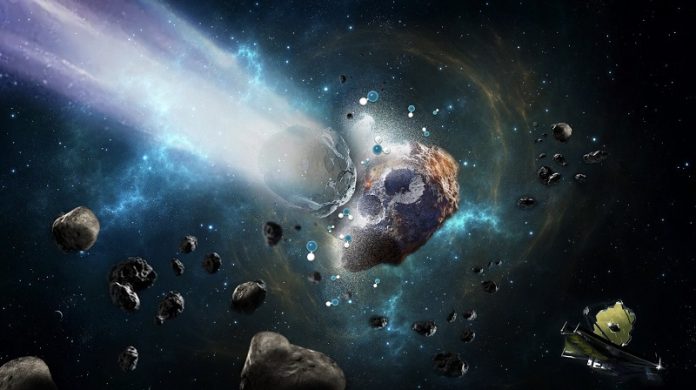
A team of scientists has found evidence of water on the surface of the asteroid Psyche, thanks to data from NASA’s James Webb Space Telescope.
This exciting discovery sheds light on the complex history of Psyche, one of the largest asteroids in the main asteroid belt between Mars and Jupiter.
The findings provide valuable context for NASA’s Psyche spacecraft, which is currently on its way to study this intriguing asteroid.
Psyche is about 140 miles in diameter, making it one of the most massive objects in the asteroid belt.
Previous studies suggested that Psyche is mostly made of metal, leading scientists to believe it could be the exposed core of a planet that was destroyed in a massive collision.
NASA launched the Psyche spacecraft on October 13, 2023, and it is expected to reach the asteroid in August 2029, after traveling 2.2 billion miles.
The research, led by Southwest Research Institute (SwRI) and involving scientists from various institutions, used infrared light data from telescopes to study Psyche’s surface.
The team, including Dr. Tracy Becker from SwRI and Dr. Stephanie Jarmak from the Center for Astrophysics | Harvard & Smithsonian, discovered hydroxyl molecules on the asteroid.
Hydroxyl is a chemical compound that includes oxygen and hydrogen, and its presence on Psyche suggests that the asteroid may have hydrated minerals on its surface.
This discovery raises important questions about Psyche’s past. The hydrated minerals could have come from external sources, such as other asteroids that collided with Psyche.
However, if the water is native to Psyche, it could mean that the asteroid has a very different history than scientists previously thought.
Asteroids are like time capsules from the early solar system, containing clues about how planets and other bodies formed. If Psyche’s water is original, it might have formed farther from the sun, beyond the “snow line”—a region in the solar system where it’s cold enough for water and other volatile compounds to freeze and become solid.
This could mean that Psyche later moved to its current location in the asteroid belt, challenging the idea that it is the remnant of a planet’s core.
The research also found that the water-related features on Psyche’s surface are not evenly distributed, suggesting that the asteroid’s surface has been shaped by impacts from other space objects, possibly carbon-rich asteroids that are known to contain water.
Understanding where asteroids like Psyche formed and what they are made of helps scientists learn more about the early solar system.
It also provides clues about how water, which is essential for life, was distributed throughout our solar system. This knowledge could even guide future searches for life on other planets and moons, both within our solar system and beyond.



